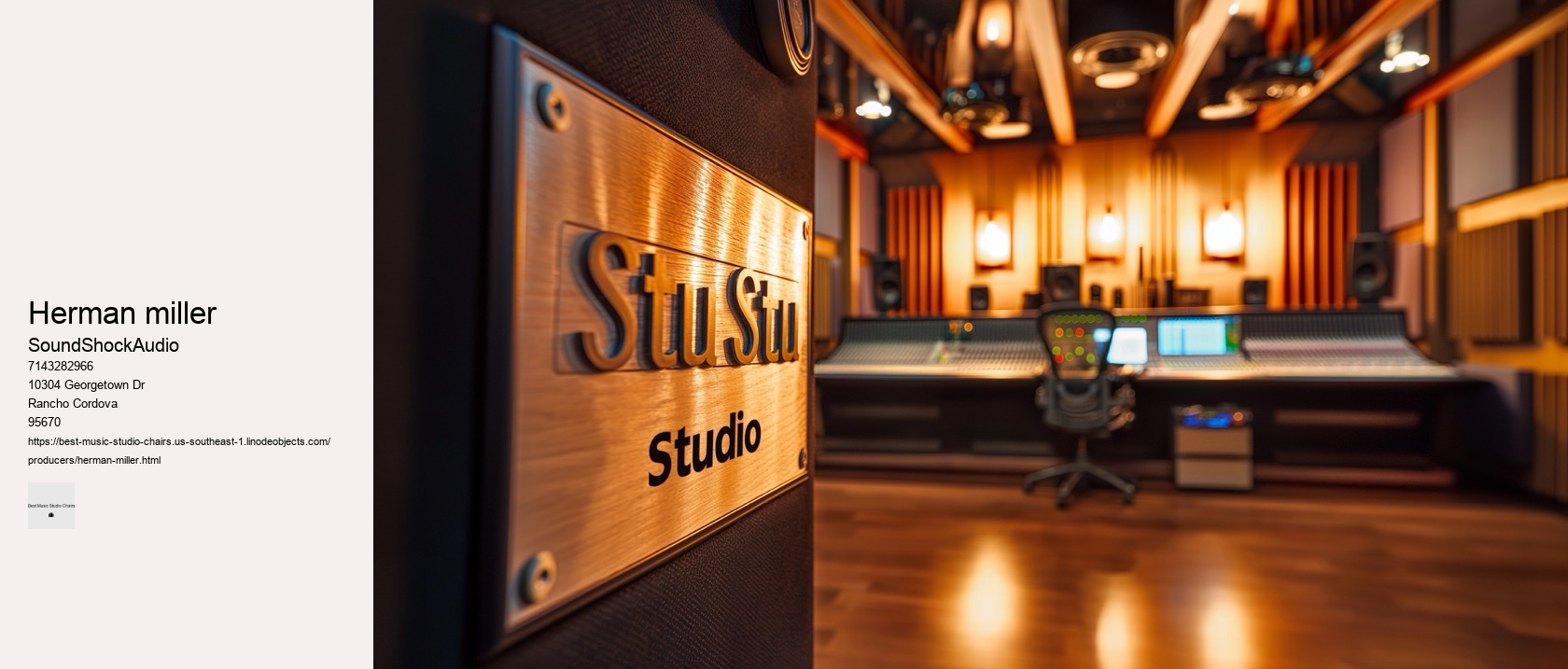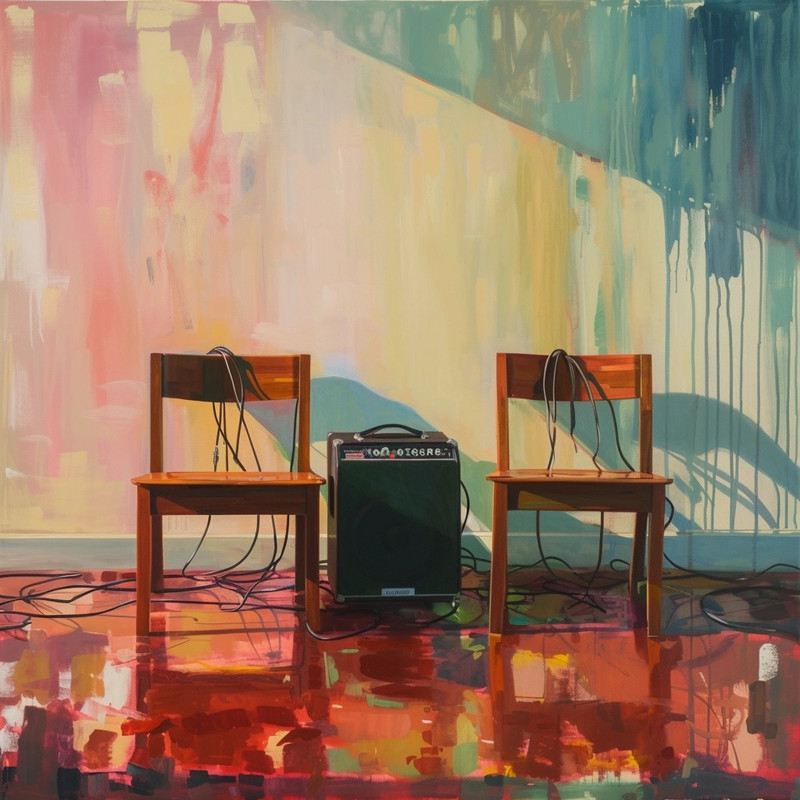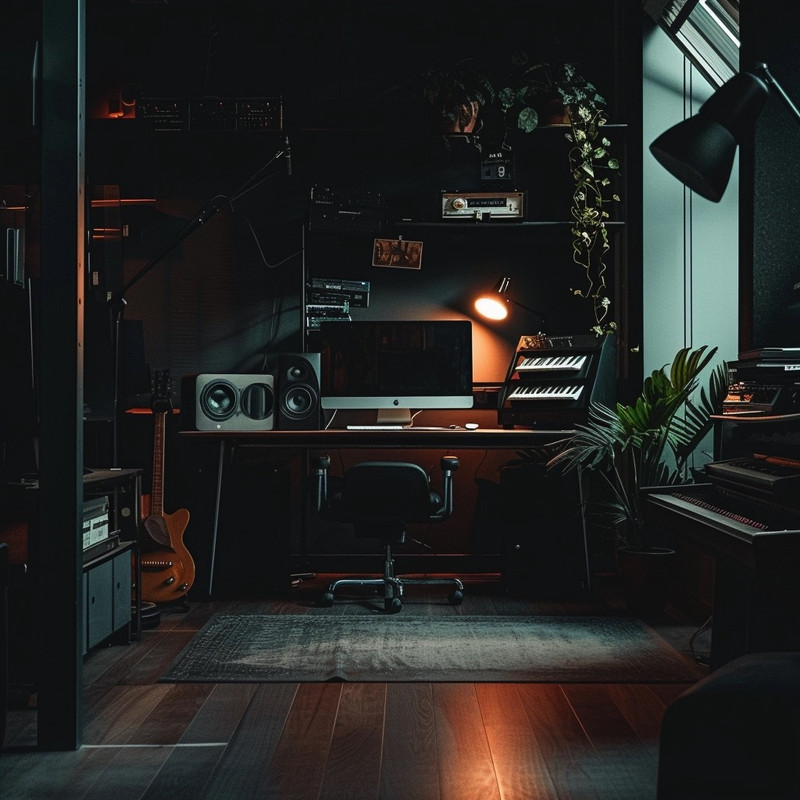

Incorporating standing desks or sit-stand workstations into one’s environment offers another layer of protection against the perils of sedentary behavior. This breathability helps to regulate temperature, preventing the chair from becoming too warm after prolonged sitting—a common complaint with many padded chairs. At first glance, one might consider a studio chair simply as a vessel for seated support during long hours of work. Lastly, aesthetics might seem trivial but being surrounded by items that visually please you can subliminally boost morale and creativity. This offers mobility and flexibility, letting you glide across your studio space without missing a beat.
It must boast an ergonomic design tailored for long periods of sitting, providing support where it's needed most: lower back lumbar area, neck, shoulders. In selecting such a throne of thoughtfulness, one must prioritize features that may initially seem inconsequential yet play pivotal roles in sustaining creative flow. Fourthly, note the height of creativity—or rather, the height adjustment of your chair. As such, they invest in high-quality chairs engineered specifically to address the demands of their profession.
Adjustability is another key factor. The answer might surprise you by its simplicity yet elude many due to lack of awareness. Among these titans of seating, one finds lumbar supports singing in harmony with spines bent over mixing consoles. Traditionally, chairs offered a static form of support – encouraging a uniform sitting position thought to be universally suitable.
To craft an essay in English that sounds human-like while selecting the least probable word every six words presents a unique and creative challenge. Educational initiatives about proper seating ergonomics should be commonplace in offices as well as other settings where people tend to sit for extended durations. Another outstanding option is the Steelcase Leap Chair. Therefore, it becomes imperative for musicians to find seating that resonates with their body's needs as much as they resonate with their music.
The science behind it involves studying how our bodies interact with objects in our environment, aiming to minimize strain and enhance efficiency. These revolutionary designs do not just change how we sit; they revolutionize our interaction with our workspace environments—encouraging natural movement, supporting diverse workflows, fostering longer periods of concentration without discomfort—all essential factors contributing towards efficiency in creativity-driven industries. Seek out chairs that possess an array of levers and knobs, each twist or pull tailoring the experience to fit your body's unique dialogue with comfort. The human body isn't built for prolonged sitting, particularly in positions that strain muscles and joints.
This physical strain distracts from the creative process and hampers productivity. Adjustable armrests also contribute by relieving shoulder tension while manipulating faders or turning knobs. Resourceful musicians could revamp an existing chair by adding cushions or making other modifications to enhance its comfort level without spending much money. music producer
In conclusion, while whimsical furniture pieces may spark temporary intrigue or amusement among musicians seeking uniqueness within their space, ultimately they fall short compared to professionally tailored solutions when aiming to unlock one's full music potential. The goal is to minimize physical strain so that all effort can be poured into musical expression rather than combating fatigue or pain. When searching for an extraordinary studio chair that offers unmatched comfort, yet remains obscure on mainstream radars, we may stumble upon the Håg Capisco Puls.
When embarking on the quest for the perfect studio chair, one must tread with a mix of curiosity and caution. Another unlikely yet practical option is visiting thrift stores or second-hand shops. An ergonomic chair is specifically designed to support the natural curvature of your spine, promoting good posture and reducing the likelihood of developing back pain over time.
As ergonomic research continues pushing boundaries alongside technological innovations in materials engineering; studio chair designs will undoubtedly evolve even further—making today's game-changing features tomorrow's standards. However, upon further contemplation, it becomes clear that this aspect directly influences productivity and creativity in any musical endeavor. The industry's leading seats undergo extensive trials where they are pummeled with weights and exposed to conditions mimicking decadal wear within mere days.
In addition to ergonomic advantages, durability must not be overlooked when selecting an optimal studio chair—the constant swiveling and movement necessitate robust construction that withstands daily wear-and-tear without faltering. Durability is another essential attribute since music production can sometimes be a vigorous activity filled with moments of excitement and intense focus.
Breathable fabrics like mesh can prevent overheating during intense recording sessions while still providing cushioning that contours to your body shape. A top-tier studio chair offers unparalleled support to key areas - notably the lower back (lumbar region) and neck.
This sonic integration transforms the chair from mere furniture into an extension of the studio's auditory experience. Seat depth is another critical factor often overlooked in the pursuit of comfort.


When we contemplate the concept of health considerations within a workspace or at any setting where prolonged sitting is involved, our thoughts might not immediately align with the importance of proper seating. Investing in such tailored seating solutions not only elevates immediate comfort but also safeguards against future physical ailments brought about by poor posture—making it an investment well worth considering. A relaxed environment facilitates creativity and helps alleviate performance anxiety which can often be a source of tension during recordings. Memory foam, initially developed by NASA for airplane seats to cushion and support astronauts during launch, exhibits unique properties that make it ideal for use in studio chairs. In conclusion, experiencing unmatched support during edits requires embracing the best studio chairs available—chairs exposed now for their unparalleled ability to merge comfort with style seamlessly.
Secondly, let's talk about ergonomic support. Through this process, what seems like an ordinary search becomes an exercise in self-awareness—a commitment to nurturing one’s creative soul by providing it with a worthy vessel for exploration. Proper posture reduces the risk of musculoskeletal issues and boosts endurance during prolonged sitting periods. Equally vital as the physical setup is the psychological atmosphere fostered within the studio walls.
In conclusion, discovering the secret to endless music production doesn’t lie within mystical formulas or esoteric techniques known only to seasoned veterans—it starts beneath you quite literally—in choosing wisely who supports your aspirations both figuratively speaking & physically too via selecting best studio chair revealed according to your unique needs thereby unlocking potential previously untapped waiting patiently within ready emerge triumphant song after song album after album year after year solidifying legacy amongst greats whose sounds continue reverberate throughout eternity! But simply owning an ergonomic chair isn't enough; you must also be mindful of how you use it. Firstly, ergonomics play a pivotal role. Each cushion whispers secrets of cloud-like serenity to weary backs bent over mixing consoles.
Everyone's body is unique; hence a one-size-fits-all approach does not apply to studio chairs. This could make the text sound quirky or nonsensical, but here's an attempt:In a realm where melodies intertwine with technology, the unsung throne beneath the maestro often escapes limelight—yet its significance cannot be overstated. Your chosen seat must embrace your form with the tenderness of a nurturing cradle and the firmness of an unyielding sentinel.
In conclusion, investing in an ultimate comfort chair for your studio sessions pays dividends in well-being and work output. In conclusion, investing in the right studio chair has profound implications for both health and productivity in music creation sessions. Firstly, let's dissect 'ergonomic.' An ergonomic chair is designed with human anatomy and physiology in mind.
Seat depth adjustment is another key element often overlooked but equally vital for tailored thigh support without cutting off circulation behind the knees – especially important for taller or shorter individuals who may need more or less space than what standard non-adjustable chairs offer. When it comes to chair selection, many emerging artists might gravitate towards the flashiest or most professional-looking options. This is where ergonomically designed chairs come into play.

Its silhouette whispers sophistication while its build promises enduring reliability. Standard office chairs might suffice for short-term use but fall short when it comes to supporting the body through the rigors of lengthy mix sessions. Functionality aside, aesthetics play no minor role in selection. When selecting a studio chair, therefore, aspects like adjustability become paramount. Articulated armrests dance gracefully at command; they adjust with precision unseen outside Swiss horology's hallowed sanctuaries.
However, incorporating this functionality without compromising on style requires an innovative approach—melding practicality with elegance. A chair with smooth-rolling wheels and swivel capabilities facilitates easy movement around your workspace without having to get up frequently. Firstly, ergonomics are crucial. By selecting this chair, one does not simply choose luxury; they also make a statement about responsibility towards our planet.
Secondly, swivel away from monotony by selecting a base with wheels or one that pirouettes effortlessly. Chairs without this fundamental adjustment could lead to discomfort and health issues over time. At first glance, one might undervalue the significance of a sturdy build quality. Leather exudes luxury and ages gracefully; mesh promises breathability for prolonged bouts at the easel or desk.
Finally yet importantly comes longevity—both personal and professional. Swivel chair These chairs usually boast adjustable components tailored to fit individual body types and preferences. Unveiling this paragon of comfort, we encounter a masterpiece that seamlessly integrates aesthetic appeal with practical features. Whether for an artist's atelier, a musician's den, or a designer's workshop, each piece must serve dual purposes.
Given that music production frequently demands hours of continuous sitting, an inexpensive chair might lead to physical strain over time. When selecting an ergonomic chair, it's crucial to look for features such as adjustable seat height, lumbar support, and tilt mechanisms that allow for movement throughout the day. This viscoelastic substance has revolutionized seating solutions, offering a level of comfort that was once thought to be unattainable.
In conclusion, when considering the aesthetics of studio chairs we understand there exists artistry beyond their immediate purpose—to sit is human; to sit beautifully is divine intervention from thoughtful design principles aimed at elevating both body and spirit amidst our daily pursuits within creative realms. Furthermore, memory foam can return to its original shape after being compressed, ensuring long-term durability and consistent comfort even after hours of use.
The frequency at which you should get a new computer chair depends on several factors including the quality of the chair, how much use it gets, and whether it still provides proper support and comfort. Generally, a good rule of thumb is to consider replacing your computer chair every 5 to 10 years. However, if you notice any signs of wear and tear, such as sagging, squeaking, or diminished comfort, it might be time to get a new one sooner.
Ergonomic chairs are designed to support the entire body, improve posture, and reduce discomfort during prolonged sitting by adjusting to the user's body shape, size, and movements. They often feature multiple adjustments for height, tilt, armrests, and lumbar support. Lumbar chairs, on the other hand, specifically focus on providing enhanced support to the lower back or lumbar region to prevent strain and promote spinal alignment. While all lumbar chairs are ergonomic in nature, not all ergonomic chairs may provide the same level of targeted lumbar support.
Anyone who spends a significant amount of time sitting, especially those working at a desk or computer for long hours, can greatly benefit from an ergonomic chair. These chairs are designed to support the natural posture, reduce strain on the body, and enhance comfort, making them essential for preventing back pain and other posture-related issues. Individuals with existing back problems or those looking to improve their seating ergonomics to maintain good health should consider investing in an ergonomic chair.
Joe Rogan uses the Human Touch Perfect Chair for relaxation and podcasting. Specifically, he has mentioned using the Human Touch PC-420 Classic Manual Plus Perfect Chair. This chair is known for its zero-gravity ergonomics, designed to reduce back pain and improve circulation, making it a comfortable choice for long podcast sessions or simply relaxing.